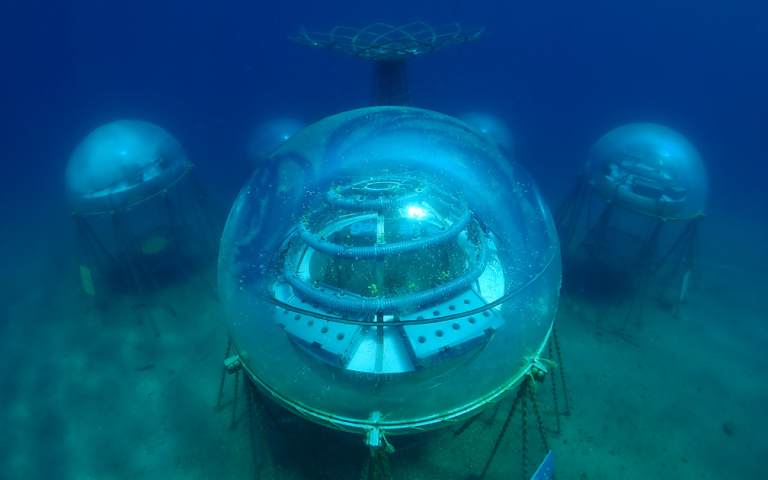An underwater vegetable garden under a plastic bell!

Growing strawberries and basil under the sea sounds like something that Jules Verne might have come up with. And yet, that very idea is what Italian entrepreneur Sergio Gamberini dreams about.
An ingenious and natural concept
Created in 2012, Nemo’s Garden© is an underwater vegetable garden based off the coast of Liguria in Italy, 50m from the coast and at a depth of between 6 and 10 metres. It produces about forty species of aromatic herbs and vegetables using hydroponic cultivation techniques. Installed inside "polycarbonate bubbles" filled with air, the soil is replaced by an inert substrate irrigated with a solution containing all the nutrients the plants need.
A new form of organic farming
To date, the six plastic bubbles that make up this underwater greenhouse have only produced limited quantities of as each of them can only accommodate 80 to 100 small plants. However, if parent company Ocean Reef Group© were able to solve the challenges related to the project’s size, logistics and profitability, this new form of agriculture could become a solution to the shortage of arable land and other agricultural problems.
Simple and ecologically promising
Thanks to constant underwater temperatures, seawater evaporates, releases its salt concentrate and condenses into fresh water inside the greenhouses. The sun's rays penetrate better into the water and easily reach the greenhouses to grow crops. The high humidity level prevents any risk of drought. The evolution of the crops is monitored daily by cameras connected to the greenhouses, as well as by divers who pull on their fins to observe the condition of the crops and the growth of algae, which limits the passage of light, on the walls of the bubbles. The other advantage of this form of underwater culture is the absence of harmful factors. The plants are protected from insects and can grow without having to resort to pesticides.
A solution to the shortage of arable land?
Taking advantage of the massive amounts of space areas offered by the sea when few resources are available on land: in any case, agriculture has already shown that it can adapt to extreme conditions, from permaculture at the North Pole to plants that grow in space!
More information:





